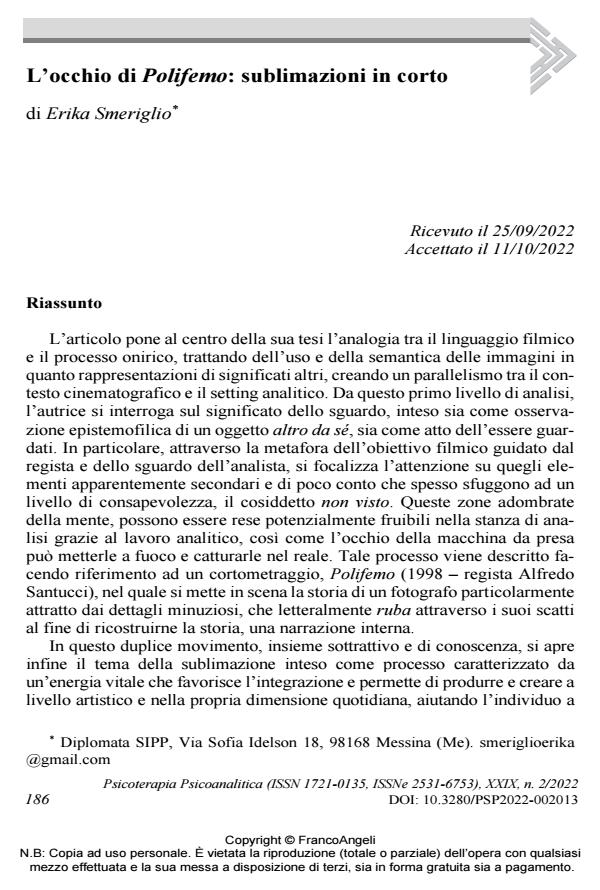The eye of Polyphemus: sublimations in short
Journal title PSICOTERAPIA PSICOANALITICA
Author/s Erika Smeriglio
Publishing Year 2022 Issue 2022/2
Language Italian Pages 11 P. 186-196 File size 202 KB
DOI 10.3280/PSP2022-002013
DOI is like a bar code for intellectual property: to have more infomation
click here
Below, you can see the article first page
If you want to buy this article in PDF format, you can do it, following the instructions to buy download credits

FrancoAngeli is member of Publishers International Linking Association, Inc (PILA), a not-for-profit association which run the CrossRef service enabling links to and from online scholarly content.
The article focuses on the analogy between the filmic language and the dream process, dealing with the use and semantics of images as representations of other meanings, creating a parallel between the cinematographic context and the analytical setting. From this first level of analysis, the author questions the meaning of the gaze, understood both as an epistemophilic observation of an object other than itself, and as an act of being looked at. In particular, through the metaphor of the filmic lens guided by the director and the analyst’s gaze, attention is focused on those apparently secondary and minor elements that often escape a level of awareness, the so-called unseen. These overshad-owed areas of the mind can be made potentially usable in the analysis room thanks to analytical work, just as the eye of the camera can focus on them and capture them in reality. This process is described by referring to a short film, Polyphemus (1998 - director Alfredo Santucci), in which the story of a photographer particularly attracted by meticulous details is staged, who literally steals through his shots in order to reconstruct the story, an internal narrative. In this twofold movement, both subtractive and knowledge, the theme of sublimation opens up as a process characterized by a vital energy that favors integration and al-lows to produce and create on an artistic level and in one’s own daily dimension, helping the individual to overcome and make painful feelings bearable, investing affectively in small or large pleasures like that of passion in one’s work.
Keywords: film language, sublimation, image, dream, cinema, Unconscious.
Erika Smeriglio, L’occhio di Polifemo: sublimazioni in corto in "PSICOTERAPIA PSICOANALITICA" 2/2022, pp 186-196, DOI: 10.3280/PSP2022-002013